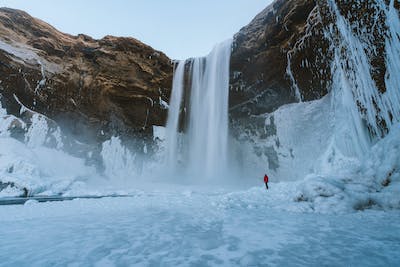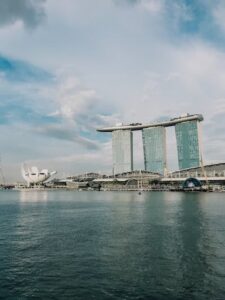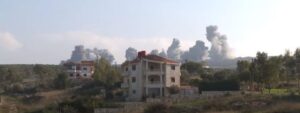Exploring Ice Land

Exploring the Icy Wonders of Iceland
Iceland, often referred to as the “Land of Fire and Ice,” is a captivating island nation located in the North Atlantic Ocean. This unique and enchanting land is renowned for its stunning landscapes, dramatic geological formations, and a myriad of natural wonders that have drawn explorers and adventure seekers from around the world. With its diverse topography, including glaciers, volcanoes, geysers, waterfalls, and hot springs, Iceland offers a once-in-a-lifetime opportunity to immerse oneself in the heart of the Earth’s most powerful geological forces. In this essay, we will embark on a virtual journey to explore the mesmerizing ice-covered landscapes of Iceland, delving into its geological marvels, rich history, unique culture, and the environmental challenges it faces in the modern era.
- Glaciers: Iceland is home to some of Europe’s largest glaciers, covering about 11% of its total land area. The largest glacier, Vatnajökull, is a vast expanse of ice and is Europe’s largest by volume. The glacier’s constantly shifting surface provides a captivating yet unpredictable landscape. Visitors can explore the glacier’s immense ice caves, ice tunnels, and crevasses, which reveal the glacier’s inner beauty and offer a unique glimpse into the world beneath the ice.
- Volcanoes: Iceland’s geological makeup is shaped by the Mid-Atlantic Ridge, a divergent tectonic boundary that splits the island in two. Consequently, Iceland is volcanically active and boasts numerous volcanoes. One of the most famous eruptions in recent history occurred in 2010 when Eyjafjallajökull erupted, disrupting air travel across Europe. The volcanic landscapes in Iceland are both otherworldly and awe-inspiring, with lava fields, craters, and geothermal areas that remind us of the Earth’s fiery power.
- Geysers and Hot Springs: Iceland is a hotbed of geothermal activity, and visitors can witness nature’s geothermal wonders up close. The Great Geysir, from which the English word “geyser” is derived, is an iconic natural attraction in the Haukadalur Valley. It intermittently shoots scalding water and steam into the air, creating a mesmerizing spectacle. Nearby, the Strokkur geyser erupts with impressive regularity, delighting onlookers with its powerful bursts.
- Waterfalls: Iceland is a land of countless waterfalls, each with its own unique charm. Gullfoss, located in the Golden Circle, is one of the most famous waterfalls in Iceland. It cascades down a two-tiered staircase into a narrow canyon, creating a thunderous roar and a dazzling display of rainbows on sunny days. Other notable waterfalls include Seljalandsfoss, Skogafoss, and Godafoss, each with its own dramatic setting and story.
- Tectonic Plate Boundary: The Mid-Atlantic Ridge, which bisects Iceland, is a boundary where the Eurasian and North American tectonic plates meet. This geological phenomenon is clearly visible at Thingvellir National Park, where visitors can walk between the continents. This park is not only a geological wonder but also a site of historical significance as the location of Iceland’s first parliament, Althing, established in 930 AD.
Rich History and Culture
- Viking Heritage: Iceland’s history is deeply intertwined with its Viking heritage. The country was settled by Norse explorers and settlers in the 9th century, and the Icelandic Sagas, epic narratives of these early settlers, are a testament to their rich storytelling tradition. The Viking influence is still palpable in Iceland’s culture, with Viking festivals, museums, and even reenactments celebrating this heritage.
- Language and Literature: The Icelandic language, rooted in Old Norse, has remained remarkably unchanged over the centuries. This linguistic preservation is a source of national pride, and the country takes great care to protect its language. Icelandic literature, including works like the Prose Edda and the Poetic Edda, holds a significant place in world literature, providing insights into Norse mythology and heroic tales.
- Contemporary Culture: Despite its small population, Iceland has made substantial contributions to contemporary culture. Icelandic music, particularly the ethereal and innovative sounds of artists like Björk and Sigur Rós, has gained international acclaim. The country’s film industry has also flourished, with films such as “Jar City” and “Of Horses and Men” receiving critical acclaim.
- Unique Cuisine: Icelandic cuisine reflects the island’s geography and history. Traditional dishes include hákarl (fermented shark), rúgbrauð (rye bread baked in geothermal ovens), and skyr (a thick yogurt-like dairy product). Adventurous foodies can sample these dishes, while those seeking more familiar flavors will find a growing culinary scene with a focus on locally sourced ingredients.
- Literary Legacy: Iceland has a strong literary tradition, and its people take pride in their literary heritage. Reykjavik, the capital city, was designated a UNESCO City of Literature in 2011, underscoring the nation’s commitment to fostering a love for reading and writing. The annual Iceland Writers Retreat attracts authors and literary enthusiasts from around the world to participate in workshops and explore the country’s literary culture.
Environmental Challenges
- Climate Change: Like many polar regions, Iceland is experiencing the effects of climate change at an accelerated pace. Rising temperatures have led to the rapid retreat of glaciers, affecting the country’s landscapes and ecosystems. Additionally, increased precipitation and the melting of ice contribute to rising sea levels, which pose a threat to coastal communities.
- Tourism Impact: The surge in tourism over the past decade has brought both economic benefits and environmental challenges to Iceland. Popular natural attractions are often crowded during peak seasons, putting additional stress on fragile ecosystems. Managing this influx of tourists while preserving the environment remains a critical challenge for the country.
- Energy Production: Iceland’s reliance on geothermal and hydroelectric power has made it a global leader in renewable energy. However, the expansion of energy infrastructure can have environmental consequences, including disruptions to local ecosystems and habitats. Striking a balance between sustainability and energy needs is an ongoing challenge.
- Resource Management: Iceland’s marine resources, including fisheries, are vital to its economy. Sustainable management of these resources is crucial to ensure the long-term health of the ecosystems and the livelihoods of those dependent on them. Stricter regulations and conservation efforts are necessary to address this challenge.
Iceland, with its icy wonders and captivating landscapes, offers a unique opportunity to explore the raw power of nature and the resilience of a nation deeply connected to its environment. From glaciers and volcanoes to waterfalls and geysers, Iceland’s geological marvels never fail to astound visitors. Its rich history and culture, rooted in Viking heritage and a commitment to preserving its language and literature, add depth to the island’s allure. However, Iceland is not without its challenges, particularly in the face of climate change and the impact of tourism on its delicate ecosystems.
As we continue to explore the icy treasures of Iceland, it is imperative that we do so with a sense of responsibility and a commitment to preserving this extraordinary land for future generations. By embracing sustainable practices and environmental stewardship, Iceland can continue to share its natural and cultural wonders with the world while safeguarding its unique and fragile environment. Ultimately, the “Land of Fire and Ice” serves as a reminder of the awe-inspiring beauty and power of our planet and the importance of protecting it for the generations yet to come.
Exploring Ice Land





